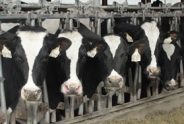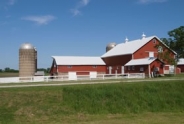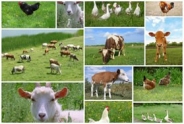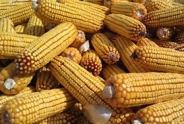Managing forage in the face of more frequent extreme weather events
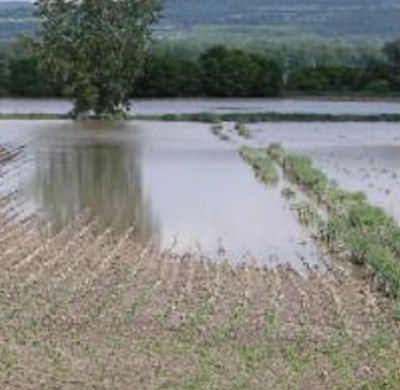
By Joe Lawrence, PRO-DAIRY
The list of notable weather events in 2023 is long and varied — from drought In the forage world, wild swings in winter weather can be a concern for conditions in parts of the Midwest, to extreme flooding in portions of New England, to smoky skies from Canadian wildfires. Stepping back from the seasons' weather, to larger climate trends, 2023 set a new global record for the warmest year, and rainfall patterns continue to become more extreme. In the last decade, the Northeast Regional Climate Center has shared data that the occurrence of very heavy precipitation events is up 71 percent from its baseline in 1958. While the Northeast has experienced the most drastic changes in occurrence of these extreme precipitation events, the data shows that all areas of the continental U.S. are experiencing an increase in these events.
Agriculture continues to face uncertainties related to a changing climate. The spring of 2023 provides an example of this from New York fruit growers. A mid-May frost devastated portions of the state's apple and grape crops. However, it was not only the date of the frost that made the crop so vulnerable. It was also the warm spring weather that caused these crops to "wake up" earlier, resulting in them being at a more vulnerable stage of growth to the frost.
In the forage world, wild swings in winter weather can be a concern for performance and survival of our perennial forages and winter small grains. With respect to achieving farm forage quality goals, the extreme nature of the weather events within the growing season carries the most concern.
While we cannot manage the weather, understanding the increased likelihood of these events, and evaluating the goals of our forage program, provide the best chance to minimize the negative implications for these extreme events.
A successful dairy forage program, specifically in areas of the country where home-grown forages are key to a cost-effective feeding program, the goals go well beyond having an adequate supply of forage for a given herd size. They should also go beyond focusing all efforts on high-quality forages. Yes, an adequate supply of high-quality forage is important. However, it does not give us all the tools we need to fully utilize forages in a dairy diet.
Two related factors critical to optimizing forage use include:
1.) Matching forage quality needs to specific animal groups and assuring adequate inventory of forage within the specified quality parameters for each group of animals.
2.) Planning and implementing storage strategies that allow for separation of and access to these different forages.
With this in mind, we can then think about some of the key threats to achieve high-quality forage in the face of an extreme weather event. For corn, the stage of growth is important to the potential level of impact. Damage in pre-tassel corn generally results in a lower negative impact compared to damage occurring later in the season. For hay crops, the timing between cuttings should be considered when assessing damage. Remember to consult with the United States Department of Agriculture (USDA) and crop insurance representatives to document damage before taking any actions in the field.
YIELD
The obvious starting point is yield. An event that stunts or kills a crop will have an impact on forage inventories. Having an accurate picture of your inventories and feed usage is important at all points in the year but is critical when evaluating the impact of a lost crop and best options to address the resulting shortfalls.
- How soon will this forage shortfall impact my feeding program?
- What adjustments can I make immediately to stretch the use of remaining inventories?
- Is there time to plant a different crop? If so, does this new crop address the type and quality of forage lost for the right group of animals?
- Is purchasing forage the best option? If so, what type and quality is needed?
- Are byproducts or "forage extenders" a better strategy?
- What adjustments can be made to strategies and rotations to rebuild and stabilize inventories in the longer term?
NUTRITIONAL VALUE
Nutritional value of the forage is also at-risk from weather challenges. Impacts can vary but often relate to the inability of the crop to complete its growth process or delay of harvest past the target crop stage to meet quality goals. Ear development and maturity is fundamental to the overall nutritional value of corn silage. Corn with poor ear development or harvested at an immature stage will result in lower overall yield and lower starch content. In an extreme early season drought, it can be advantageous to decide about early harvest prior to tasseling, as pre-tassel corn can have a greater value as a grass forage.
As the corn crop reaches target harvest maturity (35 percent whole plant dry matter and equal-to or greater than two-thirds kernel milkline), if the plants remain healthy, fiber digestibility does not change much. If the plants are unhealthy due to weather or late season disease development, late-season weather conditions can exacerbate negative impact on fiber digestibility, with potential harvest delays. Watching plant health and weather patterns as harvest approaches can help refine harvest timing decisions.
Hay crops are most impacted by harvest delays and even normal weather patterns and rainfall can challenge optimum harvest timing. Late harvest negatively impacts digestibility and protein content. Leaf material contributes significantly to the quality of hay crop forages. Weather events, such as hail, and conditions that increase risk of plant diseases will impact quality. When a hay crop is damaged by hail or pest damage such as potato leafhopper, or compromised by drought conditions, the damaged plants need to be cut to reset and stimulate healthy regrowth.
Working with your farm team and advisors to understand the nutritional value of these forages, and planning accordingly for storage and usage of these feedstuffs, can minimize the impacts to your feeding program.
FEED HYGIENE
In additional to nutritional value, the term forage quality should also encompass feed hygiene and the condition of the feed when it is delivered to the animal. Compromised plant health or harvest timing can have negative impacts on feed hygiene. While forage can successfully ferment over a range of dry matters, ensiling a forage that is too wet or too dry increases the risk associated with achieving a proper fermentation and resulting feed stability. In an extreme event such as flooding close to harvest, the crop should be assessed for contamination from soil and other debris. If contamination is significant, the forage may not be suitable as a feed, or at the very least, should be stored in a separate storage structure to avoid contamination of good forages, and allow for further analysis and decision-making around feeding.
Best management practices for making silage are always important, so it is hard to say following these practices are even more important than other times. When dealing with a damaged or stressed forage, any extra effort to follow these practices is beneficial. Use caution with forage that is too wet or too dry and use research-backed bacterial inoculant designed for the forage type and conditions. For horizontal silos (bunks, piles), work to achieve a high packing density when ensiling. When building piles, manage dimensions to allow for adequate feed removal each day (minimum of six inches per day in colder weather, ten to twelve inches per day in warmer weather). Utilize an oxygen barrier plastic and assure complete coverage.
Upcoming Events
Boots in the Barn: Cornell Dairy Research Updates
January 13, 2026
January 20, 2026
January 27, 2026
February 3, 2026
February 10, 2026
February 17, 2026
February 24, 2026
Join us for some or all!
Advanced Hoof Health Program
January 15, 2026
Belfast, NY
Who should attend?
- Professional hoof trimmers
- Dairy farm owners or managers in charge of farm foot health
Topics include:
- How to Create a Strategic Trimming Program for your Dairy
- The Latest in Lameness Technology for the Dairy Industry
- Housing and Flooring Design: Its Role in Hoof Care
NY Pork Producers Connection Breakfast - Geneseo
January 17, 2026 : Pork Producers Connection Breakfast - Geneseo
Geneseo, NY
All pork producers are invited to join the New York Pork Producers for a free hot farmer's breakfast, at which they'll catch up on topics including the pork to dairy barn conversion series, NYPP digital campaigns, and 840-RFID tags.
Announcements
No announcements at this time.


